Some true crime stories are like onions. I don’t really know what I’ve got until I’ve peeled back the layers.
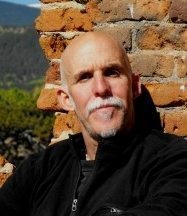
New York Times bestselling author Steve Jackson
Such was the case with my true crime book ROUGH TRADE: A Shocking True Story of Prostitution, Murder and Redemption, which I wrote in 1999 and published in 2000 following the murder trial of Robert Riggan in Jefferson County, Colorado.
ROUGH TRADE NOW AVAILABLE FOR eBOOK PRE-ORDER AND COMING SOON IN REPRINT AND AUDIO BOOK!
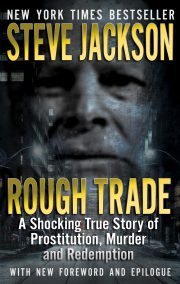
ROUGH TRADE. New York Times bestseller Steve Jackson’s classic shocking true crime story of prostitution, murder and redemption is available for pre-order now!
At first glance, the death of a young prostitute, Anita Paley, allegedly at the hands of Riggan, a drifter who lived in the shadows of Denver’s notorious East Colfax Avenue, was a sad but not particularly unique or gripping story. It certainly didn’t have the drama of the murder of a child beauty queen a few months earlier in her parent’s home in Boulder thirty miles to the north, or the impact of the depredations of the brutal killer Thomas Luther, who was also tried in Jefferson County and in 1998 became the subject of my first true crime book MONSTER. It is a sobering fact that the people who are largely invisible to us in life, except as nuisances or “undesirable,” are even of less consequence when they die violently or find themselves in the criminal system. It’s almost as though we as a society, including authors, expect that outcome and these ruined lives are material for police blotters, crime statistics and nothing more.
As an author trying to both make a living, as well as examine subjects that interest me and fit my desire to write books that have something to say about the human condition, I try to choose my stories carefully. There are, after all, only so many hours in a day and only so many books in an author’s career. It’s not the blood and gore, or sexual titillation, I’m looking for when choosing a true crime story; I’m interested in the psychology and “ripple effect” of violent crime, and the back stories of the human beings involved: killers, victims, law enforcement, those involved in the justice system, and the community.
And as an author, I’m interested in the “technical” aspects of professional book writing. Does it have the structural components of a good story: a dramatic beginning, a strong storyline, a climatic moment, and a satisfying resolution? Are the characters–like actors in a play–interesting and compelling? Are there heroes and villains? A good supporting cast? Is there some universal message, or theme, I can mine like a vein of gold that will reward my readers for giving me their time and hard-earned money?
When I considered the Paley/Riggan case, I really didn’t know how true crime readers would react to a sordid tale about prostitution and a murder trial that hardly made the news in Denver, much less anywhere else. I knew it was a solid story. The battle in court between the prosecution and defense attorneys was a good one with both sides acquitting themselves well. There was interesting and conflicting testimony from the expert witnesses on such topics as coup and counter-coup head injuries, accident recreation models, and post-mortem medical examinations. It was also the first potential death penalty case to test Colorado’s then-new statute that left the decision to a three-judge panel, instead of a jury. But that alone wasn’t enough to separate this tragedy and its legal machinations, from a million others.

Robert Riggan as he appears now
However, this was one of those stories where the main characters–people who otherwise existed only on the margins of society–made it more than a court procedural. There was the victim, Anita Paley, a young mother who’d followed a man from her home back east to Colorado where he’d got her hooked on crack cocaine, then used her body to make money, and subsequently abandoned her. What happened to her on a lonely dirt road in the mountains west of Denver made medical professionals who’d seen it all cry during their futile efforts to save her. However, there wasn’t enough about Anita to build a story around her; she was the raison d’etre that there even was a trial, but her short sad life could not carry a book. Anita was unknown, except to her family and friends, the police detectives who went after her killer, and the people she met on Denver’s seamy underbelly, one of them being Joanne Cordova and the other Robert Riggan.
In writing terms, Joanne was the flawed heroine seeking redemption. But every hero needs a villain and for that there was Robert Riggan.
On the surface, there wasn’t much to Riggan. He was no Ted Bundy, whose good looks, charming ways and evil cunning has enthralled true crime readers through multiple books. Nor was he a serial killer of historic proportions like an H.H. Holmes, or a smooth-talking sociopath Roy Melanson, the serial killer in my book SMOOTH TALKER who kept beating the system. Riggan was a physically scarred, psychologically stunted, inconsequential little man who lived on the fringes of society and sought the solace of prostitutes, as well as the release of violent sexual acts. Not much there to make him a villain worth writing about.
It wasn’t until horrifying story of his childhood emerged in court through evidence introduced by his lawyers through family members, counselors and psychologists that a multi-layered picture of Riggan emerged. Listening to some of that testimony, as well as researching his past on my own, I couldn’t help but think that sometimes the monsters in our real life nightmares
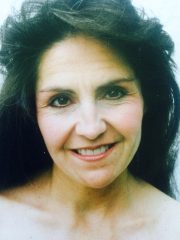
Former police officer Joanne Cordova had a choice; risk her life and “snitch” on a suspected killer, or look the other way when her friend was murdered.
are created in the homes and by the people who are supposed to represent safety to a child. I’ve heard a lot of self-serving testimony from and about defendants blaming their childhoods and other people for their actions; some of it’s real enough, but a lot of it is manufactured in an attempt to beat the system. But the abuse and depravity that were clearly part of Robert Riggan’s early life were such that I could feel sorrow for that frightened child, even if I believed the man he had become was a murderer, possibly a serial sexual predator, as some of the evidence indicated. His past didn’t excuse what he’d done, but it helped explain what he had become.
Still, neither Anita Paley nor Robert Riggan was why I decided to write ROUGH TRADE. That reason was Joanne Cordova.
Joanne, too, was sexually abused as a child by a friend of her parents. But it seemed that she’d overcome it as she grew up a “normal” teenager and eventually entered the Denver Police Academy, where she graduated and became a well-regarded officer. And yet those early seeds of abuse, as well as the influence of her older boyfriend–a corrupt police officer–might have been what lead to her own downfall as a cop and eventually to crack addiction. Years later, she was working as a prostitute on Denver’s notorious East Colfax Avenue when she befriended the younger Anita Paley. She’d also met Riggan and was subjected to his violent sexual appetite; an experience she felt lucky to escape with her own life, perhaps owing to her greater experience at handling such men than Paley.
Joanne didn’t have to come forward when she learned of her friend’s death and believed that Riggan had killed her. In fact, it was dangerous to do so, both because of the threat of Riggan, as well as the general prohibition on the streets about talking to the police. “Snitches end up in ditches” is not just a saying. But some vestige of that young woman who’d gone through the academy remained and she stepped up, including having to suffer the humiliation of her life being laid open by a defense lawyer at Riggan’s trial in front of a jury and courtroom spectators. It was an act of courage by a woman who just wanted to do the right thing for her friend, and for herself.
As a writer, I recognized the universally acknowledged theme that it is never too late to do the right thing. We are also a culture that in our books and films we appreciate the character of the flawed hero(ine) finding salvation for past misdeeds, even if only for a brief moment in time. In fact, I thought it was a mistake when the original publisher subtitled the book: A Shocking True Story of Prostitution and Murder. That subtitle ignored the most salient point of this tragedy, which is why on this edition I changed the subtitle to: A Shocking True Story of Prostitution, Murder and Redemption.
I got to know Joanne in a series of interviews around the time of the trial and its aftermath. Although she had a hard shell from her years on the streets, she was also a thoughtful, funny, forthright woman, especially about her lifestyle. She knew she’d made a lifetime worth of mistakes and that even testifying against Riggan was only a step towards changing her life, but she wanted to try.
Unfortunately, I lost track of her in the years that followed, as did some other people who cared about what happened to her, such as Detective Jim Burkhalter (ret). Then about a year or so ago, she contacted me through some friends who’d reached out to me on Facebook. At the time, I was not yet planning to republish ROUGH TRADE in print, and for the first time as an eBook and audio book. Just prior to publishing this version, I was able to locate her again and have included a bit about her in the new epilogue.
In the meantime, I hope this helps explain a little how I go about the process of selecting true crime stories, and in particular ROUGH TRADE.
—
PRE-ORDER ROUGH TRADE NOW BEFORE THE PRICES GOES UP AFTER PUBLICATION DAY!
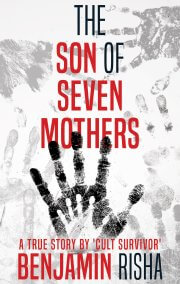

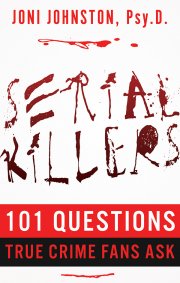
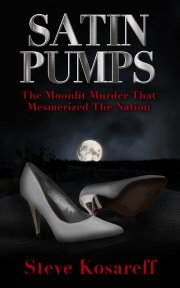
 Join our email list
Join our email list
Leave a Reply